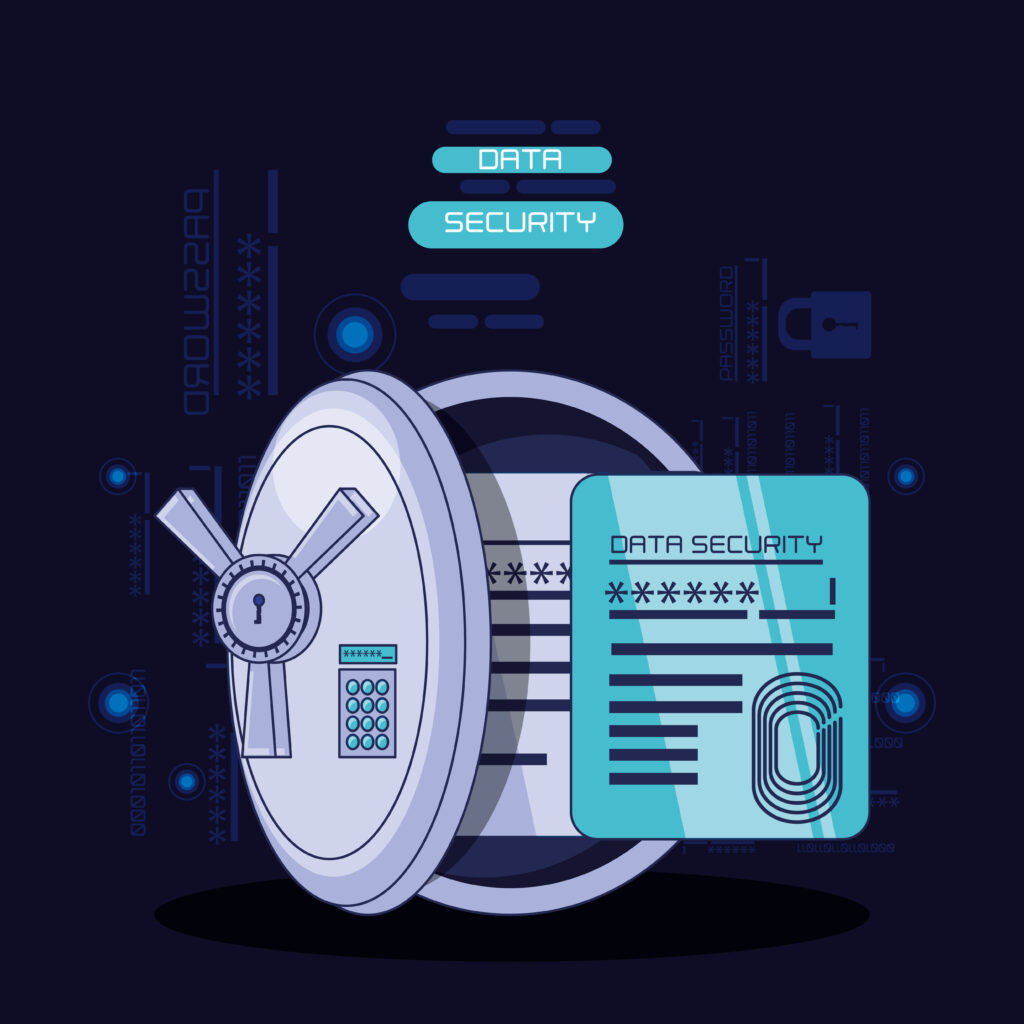You have heard how artificial intelligence is transforming industries and our daily lives, but its role in guarding the gates to our digital world is less well-known. As cyber threats and attacks grow ever more advanced, AI is proving itself an invaluable ally in the fight to protect systems and data. Automating critical processes and augmenting human analysts, AI systems are enhancing cybersecurity capabilities and enabling security teams to keep pace with the evolving threat landscape. In this article, we will explore how AI is revolutionizing cyber defense through machine learning, natural language processing, and other techniques. You will learn how leading organizations use AI to block attacks, detect anomalies, respond faster to breaches, and gain previously out-of-reach insights. As attacks become more automated, the scalable power of AI may be one of the best hopes for protecting the digital gates in the years ahead.
The Rising Threat Landscape in Cybersecurity

Cyber threats are evolving rapidly, with attackers developing increasingly sophisticated tools and techniques to compromise systems and data. According to recent reports, the volume of cyberattacks has increased by as much as 400% since the COVID-19 pandemic.
Malware and Ransomware
Malware, including ransomware, remains one of the top threats. Ransomware attacks, in which malware encrypts data and demands payment to decrypt it, have become particularly damaging. Attackers frequently target large organizations and critical infrastructure, disrupting operations.
Phishing and Social Engineering
Phishing and other forms of social engineering are commonly used to gain access to systems and deploy malware. Emails containing malicious attachments or links remain an easy way for attackers to trick victims into compromising their own security.
Vulnerabilities and Zero-Days
Software and systems invariably contain vulnerabilities, and attackers are adept at finding and exploiting them, including zero-day vulnerabilities unknown to the software vendor. The increased use of cloud services and Internet of Things devices has expanded the potential attack surface.
Insider Threats
Not all threats originate from external sources. Insider threats stemming from employees, contractors, and business partners are also a major concern. Insiders may intentionally or unintentionally compromise data and systems by falling for phishing emails, misusing access privileges, or mishandling sensitive data.
AI and machine learning technologies are well suited to help strengthen defenses against these threats by using advanced analytics to detect anomalies, enabling a rapid response to attacks, and automating parts of the threat detection and mitigation process. With cyber risks continuing to intensify, AI may be critical to “guarding the gates” and securing our digital infrastructure.
How AI Is Revolutionising Cyber Defence
AI is transforming cybersecurity through automation and improved threat detection.
AI systems can monitor networks 24/7 and detect anomalies that indicate cyber threats. They learn the “normal” behavior of users, networks, and systems and then spot deviations that could signal an attack. AI also helps aggregate and analyze huge volumes of data from many sources to detect threats that would otherwise be missed.
Once a threat is detected, AI enables a rapid, targeted response.
AI can automatically block connections from malicious IP addresses or quarantine infected systems. This minimizes damage by isolating threats before they spread. AI also speeds up the analysis of new threats so security teams can quickly develop and deploy countermeasures.
AI systems adapt to an evolving threat landscape.
They incorporate data on new threats and attack methods to enhance detection and response. AI models need to be continuously retrained on new data to remain effective. However, with AI, this process is automated and scaled – security systems get more competent and stronger over time without massive human effort.
AI is most effective when combined with human judgment and oversight.
AI systems generate alerts and recommendations for human analysts to review and validate. They handle routine tasks like monitoring and initial response, freeing up analysts to focus on complex threats. The collaboration between AI and human experts results in the best outcomes.
While AI will transform cybersecurity, human analysts remain crucial.
AI cannot match human intuition, creativity, and the ability to make nuanced decisions in ambiguous situations. But by automating basic functions and enhancing human capabilities, AI and human experts working together will guard the gates of our digital domains.
Key Areas Where AI Excels in Cybersecurity
Automated Threat Detection
AI systems can detect cyber threats with a high degree of accuracy by analyzing massive amounts of data to identify suspicious activity. AI uses machine learning algorithms that allow systems to learn directly from data, identify patterns, and make predictions with minimal human input. These AI systems can detect known threats as well as uncover new threats that have not been seen before. With AI, security teams can detect threats faster and at a higher volume than with human analysts alone.
Predictive Analytics
AI enables predictive analytics in cybersecurity by identifying risk factors and calculating the probability of future cyberattacks. AI systems can analyze large datasets of historical cyber incidents, network activity logs, vulnerability reports, and other information to identify patterns and predict where the next attack might occur. Predictive analytics allows organizations to allocate resources proactively and take preventative actions against potential attacks before damage occurs.
Orchestrated Responses
Once a threat has been detected, AI can help automate responses to mitigate damage. AI systems can block connections, isolate infected systems, disable breached user accounts, and initiate other containment measures within seconds. Automated responses are much faster than manual responses and can help reduce the impact of attacks. AI can also suggest and prioritize the best reactions for security teams to take for any given threat. Orchestrated responses enabled by AI make security operations more efficient and help organizations strengthen their cyber defenses.
- In summary, AI is instrumental in enhancing cybersecurity through automated threat detection, predictive analytics, and orchestrated responses. By leveraging AI, organizations can gain visibility into threats, anticipate risks, and respond quickly to cyber incidents. AI is a powerful tool for security teams to gain an advantage over malicious actors and make networks more resilient in the face of increasingly sophisticated threats.
Implementing AI Responsibly While Safeguarding Ethics
Transparency and Explainability
- As AI systems become more autonomous and complex, they must remain transparent and explainable. Black box AI models that are opaque and inscrutable can conceal biases and flaws. For AI to be trusted in cybersecurity, its decisions and recommendations must be explainable to security teams. Explainable AI techniques like SHAP values can provide insights into how models work by identifying the most important features for a prediction.
Guardrails and Oversight
- To ensure AI systems behave ethically, strict guardrails and human oversight is put in place. AI models should have clearly defined objectives, constraints, and performance indicators to keep them aligned with organizational values. Security teams should continuously monitor AI systems to make sure they do not start to behave in undesirable ways as they become more autonomous. Human analysts should always remain in the loop to review AI findings and have the ability to override AI decisions when necessary.
Diverse, Representative Data
- The data used to train AI models significantly impacts their performance and behavior. AI systems trained on data that lack diversity may discriminate unfairly or make insensitive predictions. Data used for cybersecurity AI should be representative of the real world. It should contain examples of both normal network behavior and different types of cyber threats to build models with a broad, unbiased understanding of security events. Regular auditing of AI training data and models is important to check for undesirable biases and make improvements.
Privacy Protection
- With access to vast amounts of data, AI has the potential to erode privacy if misused. Strict policies and controls must be established to ensure AI systems handle data ethically and keep personal information private and secure. AI models should be designed to use only the minimum amount of data required for the task and delete information when it is no longer needed. Differential privacy and other privacy-preserving techniques can help anonymize data used to train AI models. Continually evaluating the impact of AI on privacy rights and user trust will be crucial as cybersecurity AI advances.
The Future of AI in Cyber Defence
As AI continues to progress, its role in cybersecurity will expand dramatically. AI systems will increasingly monitor networks to detect anomalies that could indicate cyber threats. Using machine learning, these systems will analyze huge amounts of data to identify patterns and spot deviations that point to intrusions or attacks. Once a potential threat is detected, AI can help orchestrate an automated response to contain it until security teams can take over.
Augmented Human Analysts
Rather than replacing human security analysts, AI will augment their capabilities. AI systems can filter out false positives and prioritize alerts so analysts can focus on the most severe threats. They can also gather information from various sources to provide analysts with a more complete view of threats and a suggested course of action. Over time, as analysts work with these AI systems, the systems learn and become more effective partners.
Personalized Security
In the future, AI may be able to provide personalized cybersecurity based on a user’s typical online behavior and activity. AI systems could monitor individuals’ accounts and personal devices to detect anomalies specific to that user. Personalized security could also tailor responses based on a user’s level of cyber risk acceptance. For users who are more concerned about privacy and less tolerant of false positives, security measures may be less stringent. To ensure maximum protection, it is advisable to tighten security.
AI will be integral to the future of cyber defense as threats become more complex and targeted. By detecting emerging threats, augmenting human analysts, and providing personalized security, AI can help strengthen defenses and streamline responses. However, in the foreseeable future, human judgment and oversight will remain essential to effective cybersecurity. AI may be guarding the gates, but humans will stand watch.
In-a-nutshell
As we have seen, artificial intelligence is proving to be a game-changer in cybersecurity. By harnessing the power of machine learning and automation, AI enables security teams to identify threats and initiate responses at machine speed. Rather than fatigued humans pouring over huge volumes of data, AI systems can instantly detect anomalies and take action. With cyberattacks growing exponentially in frequency and sophistication, the automation and augmentation capabilities of AI are arriving just in time. To keep pace with this new age of cyber warfare, organizations must embrace AI-driven solutions. The future of cyber defense rests on your willingness to implement the latest tools to guard the gates. Only by deploying advanced AI systems can you hope to withstand the coming storm.
More Stories
AI-Driven Data Governance: Snowflake’s Strategic Investment in Theom
Demands for strong governance frameworks is rising; Snowflake’s support of Theom highlights importance of integrating AI-native platforms.
FinOps Foundation Amplifies Cost Controls Across Cloud, SaaS & AI
At the FinOps X conference in San Diego, the FinOps Foundation made a major advancement. Specifically, it introduced FOCUS 1.2, the latest version of the FinOps Open Cost and Usage Specification.
Snapchat Brings Messaging Power to the Apple Watch
In an era where connectivity is king, Snapchat takes a pioneering leap by bringing its dynamic messaging capabilities to the...
Gemini Takes the Initiative: AI That Actually Does Your Tasks
This innovative feature in Gemini allows you to set natural-language prompts to execute specific tasks at designated times.
CrowdStrike and Microsoft Unite to Harmonize Cyber Threat Attribution
CrowdStrike and Microsoft aim to harmonize the fragmented landscape of cyber threat attribution. Historically, varied naming conventions often muddled threat intelligence. This collaboration aims to standardize terminology.
Mozilla Deploys AI-Driven Shield to Combat Crypto-Stealing Firefox Extensions
The deployment of an AI-driven shield from Mozilla leverages automated risk assessment to scan wallet-related add-ons for potential threats.


